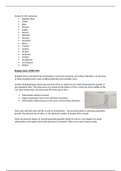Samenvatting
Author summary City Reader
For the Course Urbanism and Planning you need to read a lot of text of the city reader. There are several authors that had specific ideas on how a city works and looks. In here all the authors that we had to study in the academic year are summarized and their ideas are described.
[Meer zien]














